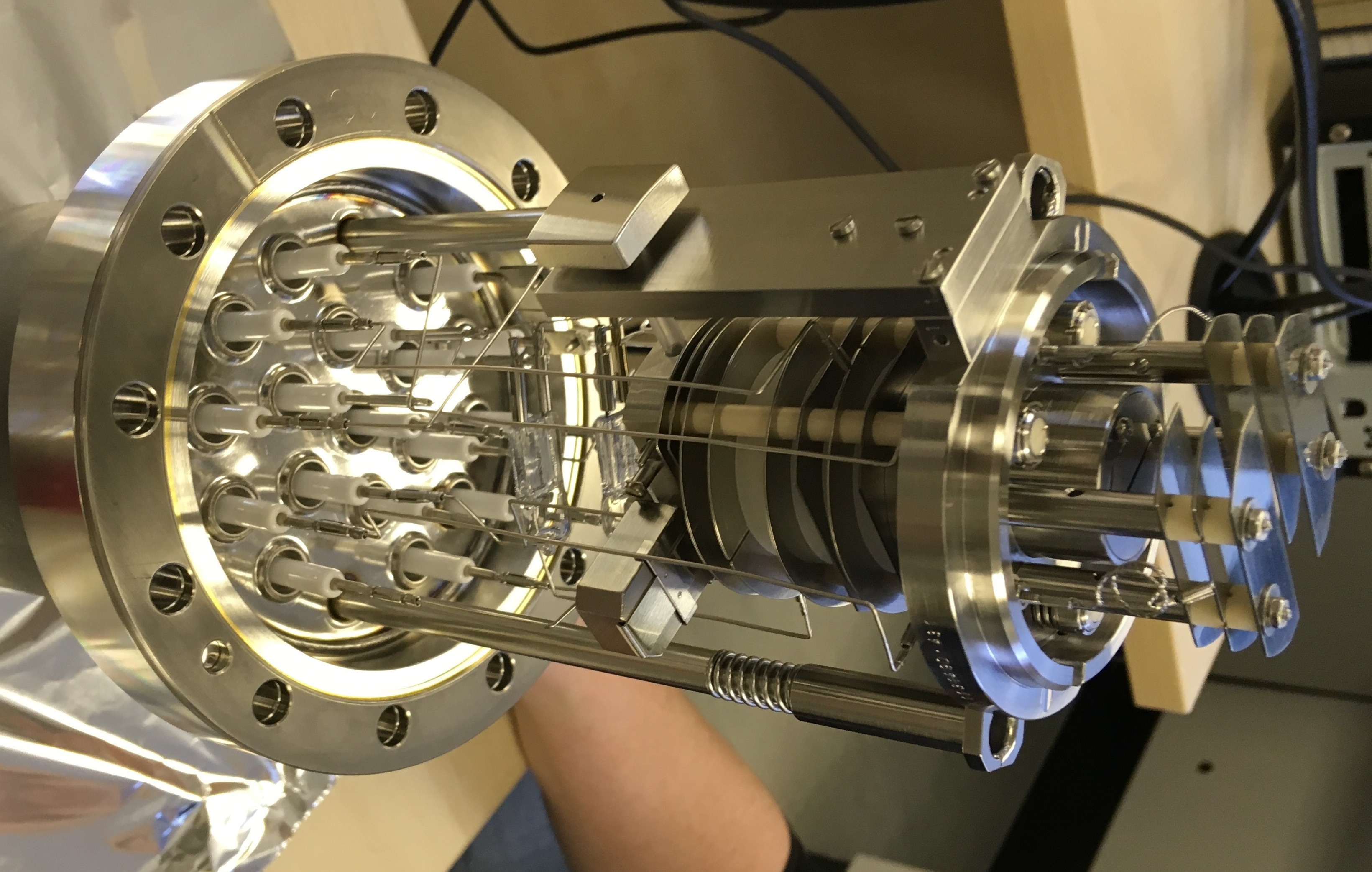Ocean-Bottom Instrumentation
The Ocean-Bottom Instrumentation Facility forms part of and underpins, many of our sub-seabed research interests which focus on the study of tectonic and volcanic processes at mid-ocean ridges, plate kinematics, mid-ocean ridge magma chambers, continental margins, oceanic islands and the flexural and mechanical properties of the lithosphere.

It also forms half of the UK's Ocean-Bottom Instrumentation Consortium (OBIC) in collaboration with partners at the National Oceanography Centre, Southampton (NOCS). The Durham-based facility is managed by Prof Christine Peirce.
WWW: Ocean-Bottom Instrumentation Consortium

The OBIC are contracted by the NERC to provide the Ocean-Bottom Instrumentation Facility (OBIF), as part of the NERC's Services & Facilities infrastructure support, as the third operational node of the Geophysical Equipment Facility.
WWW: NERC Ocean-Bottom Instrumentation Facility
WWW: Geophysical Equipment Facility
Instrumentation
We currently have up to 56 seabed instrument platforms that are configurable in a variety of ways. For seismic applications instruments can be configured as 2- and/or 4-channel ocean-bottom seismographs, with sensors appropriately chosen for passive earthquake recording or controlled-source signals such as those generated by airgun arrays. For electromagnetic applications instruments can be configured as 2-channel e-field recorders, using AgCl electrodes to record both natural and controlled-sources signal emitted by sources such as NOCS's DASI deep-towed transmitter. We are currently developing instrument configurations that will have the capacity to record both seismic and electomagnetic data during the same deployment. We also have a 12-channel vertical hydrophone array that can be used to record the far-field seismic wavefield.
Technical characteristics
Our instruments can operate in up to 5500m of water. They can be equipped with a range of sensors that include: differential pressure gauges, electric field sensors, standard hydrophones, 4.5Hz 3-component geophones, 2Hz vertical geophones, seismometers and combinations of these as required. Deployed untethered, our instruments are recoverable on command to suit acquisition programmes, weather windows or vessel scheduling. They are deployable from most vessel types ranging from trawlers or coastal vessels through to research ships and industry-standard acquisition platforms. Our instrument platforms have dataloggers that are configurable to suite a variety of acquisition types and can record at sampling dates up to 4kHz. When used for controlled-source experiments, they can record for up to 4 months. Alternatively, when used for low-frequency passive work they can record for over 1 year.
For more information contact: info@obs.ac.uk
Services
As well as supporting our ocean-bottom instrument research activities we also can provide a broad range of services to the academic and commercial communities. Our multi-sensor, versatile instrumentation is available for hire at competitive rates and is operated at sea by highly trained personnel with many years of experience in instrument deployment and recovery, and acquisition geometry design. In addition, we can offer a full range of technical, scientific and logistical support and the ability to develop bespoke instrumentation as required to suit specific applications. We can also provide a broad range of data format translation, processing, analysis, modelling and interpretation services tailored to suit requirements and time scales.
In summary, our technical and scientific capability includes:
- instrument operation at sea
- acquisition and experimental design
- data processing
- data format translation
- data analysis and interpretation
- bespoke instrument development and construction
- commissioned research
- consultancy services
Contact: info@obs.ac.uk
Environmental Impact Appraisal
The facility also hosts the NERC's Environmental Impact Appraiser for the marine environment.
Visit the EIA web site.
Facilities and Equipment
Research equipment facilities located in the department


/prod01/prodbucket01/media/durham-university/departments-/earth-sciences/60228-1998X749.jpg)
